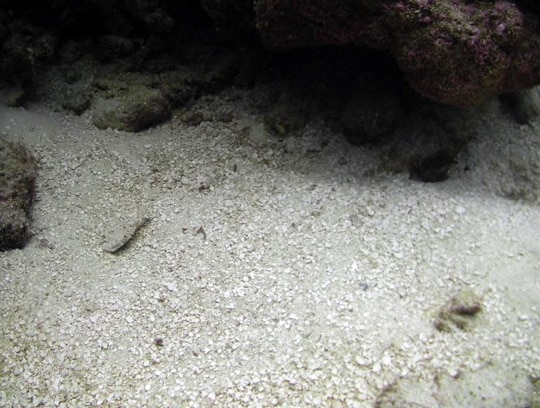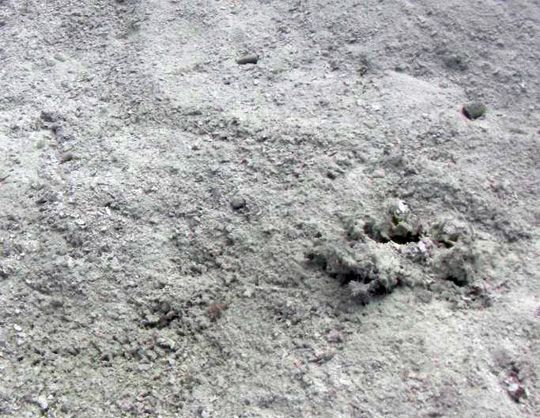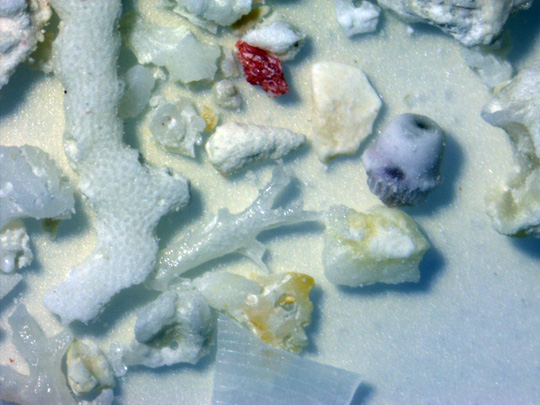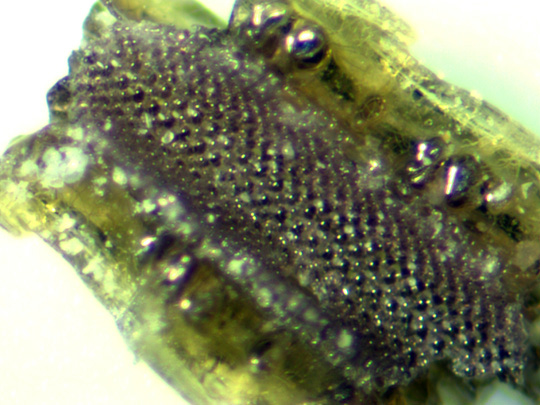Collecting and analyzing sediments is a key procedure in the field of Marine Geology. It may seem trivial to give so much attention to “sand”; however, the trained sedimentologist can learn a lot from a sample of ‘sand’, or sediment. We can understand something about the amount of energy coming into an area just by looking at the size of grains in the sediment.

A sediment sample collected in low energy environments, like lagoons and deep offshore water, would have very fine grained, or small, sediments. A sample collected beside a reef would be expected to have coarser or larger grains.

We can also examine sediment samples to see what they are made of. Close examination of a sample under a microscope reveals if the grains come from coral, shell, or sea urchin fragments for example. A sample made mostly of coral fragments would likely have originated from a reef.

Recently we have been collecting sediment samples from lagoons and along barrier shelf reefs within the Gambier Archipelago. Preliminary evidence shows that sediments are more fine grained in the protected lagoon environment and coarser grained in the exposed barrier/shelf reef environment.

Ultimately, the results from the collected sediment samples will help us to better understand how physical forces like winds, waves and currents affect the distribution of sediment in this region.
Photos by Alexandra Dempsey